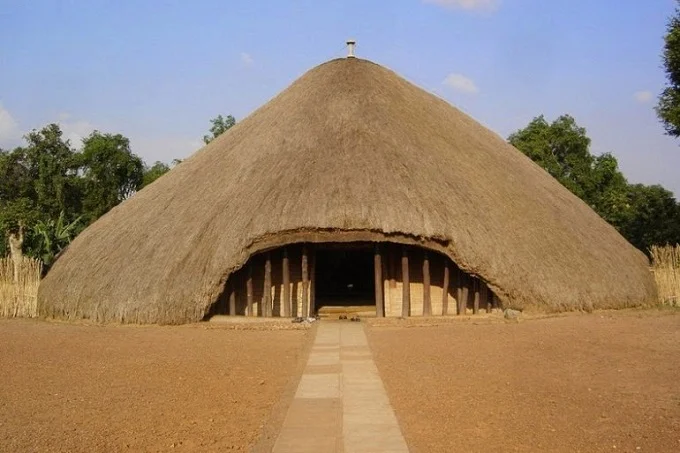The Buganda Kings’ Tombs on Kasubi Hill in Uganda are the most important spiritual focus for natives who have kept their traditions and culture. The burial site spans over 30 hectares of hillside, with much of it being arable land farmed using traditional techniques.
The Kabaka Palace, completed in 1882 and transformed into a royal mausoleum in 1884, is located at the hill’s summit. Unfortunately, just eight years after being included on the UNESCO World Heritage List, the tombs were entirely destroyed by fire in March 2010. Fortunately, all of the local people’s customs and architectural abilities have been maintained, and the essential skills are still available to properly repair the tomb.

The complex comprises four royal tombs, one of which was just 40 years ago, where the last of the monarchs was interred. All of the princes and princesses descended from the four Kabaka’s monarchs are also buried below the main shrine.
The main structure is round in form with a big dome and was constructed in the 13th century utilizing a unique construction process including wood, bamboo, and a thatched roof.
Buganda, a sophisticated monarchy, excelled in building such structures, passing down the legacy to its forefathers. However, since 1938, contemporary materials such as concrete columns have been used to save the tombs from collapsing due to aging.
Rain and termites have wreaked havoc on the graves throughout the years. The graves have been burnt three times in the last 16 years. The first fire occurred in 1998, and the structure was completely destroyed. Due to a lack of funds, it was reconstructed but without a thatched roof. A second, more severe fire occurred in 2010, destroying two huts and causing extensive damage.
There isn’t much to see right now since the fire caused extensive damage, and it’s unclear when the restoration will be completed. This isn’t to say that tourists should skip the Kasubi tombs; experienced guides and caretakers can tell you everything about them and offer you a fantastic tour.